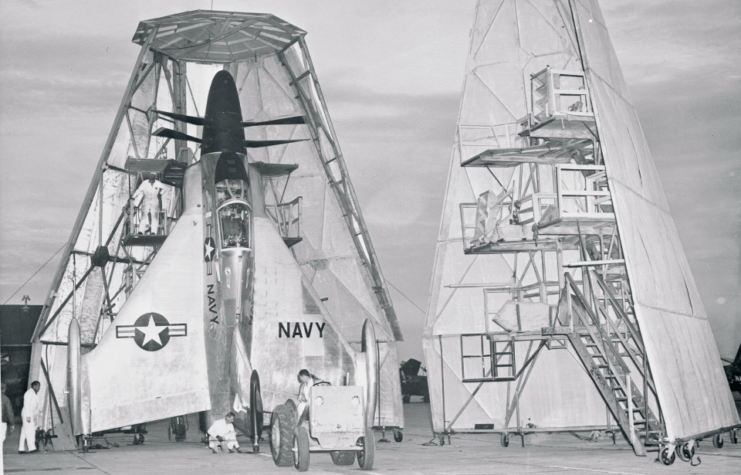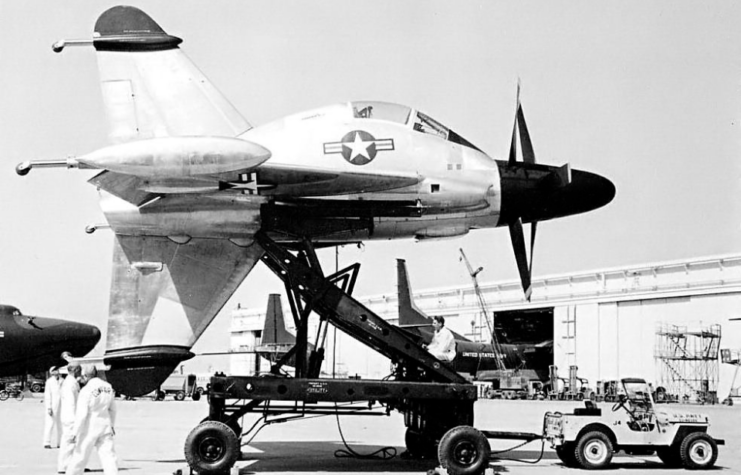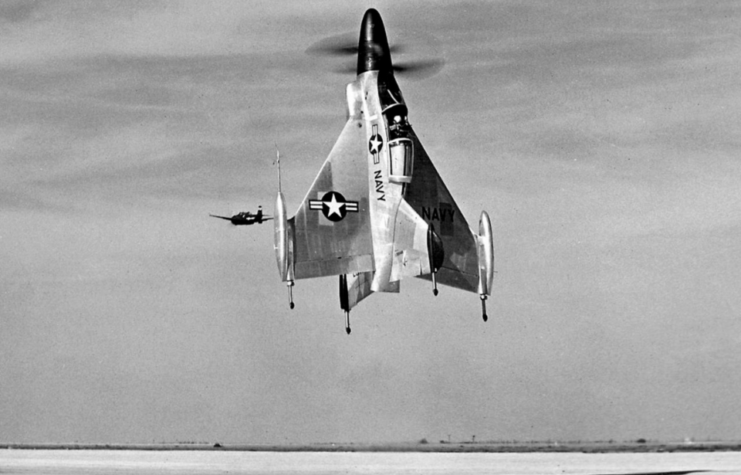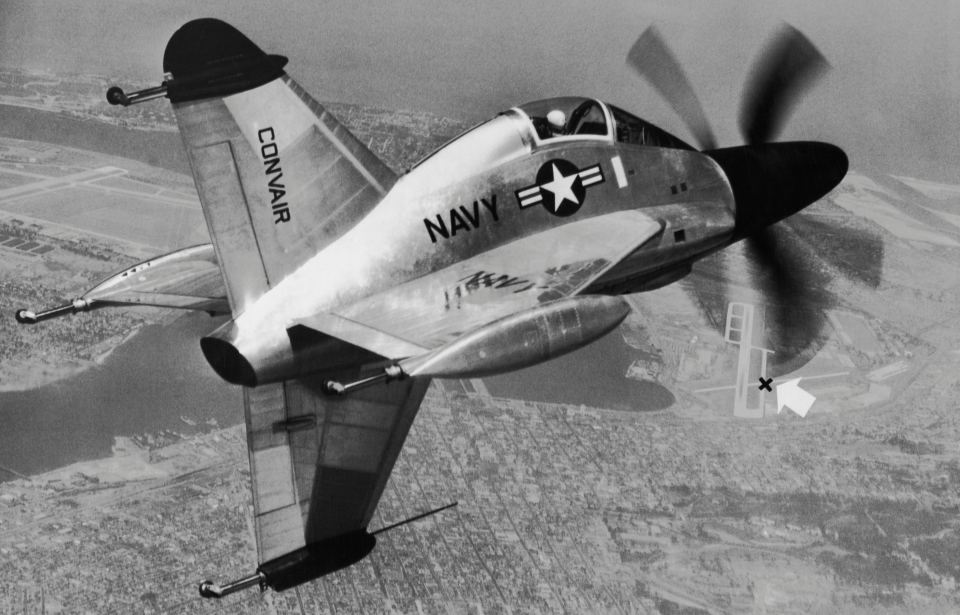The Convair XFY Pogo was an American experimental vertical takeoff and landing (VTOL) tail-sitter aircraft. Following World War II, the Americans began developing VTOL combat aircraft, in the hopes of arming US Navy vessels with aircraft that could easily take off and land, protecting fleets without the necessity of an aircraft carrier.
Developed and tested in the mid-1950s, the XFY never entered service. It did, however, show the VTOL concept was possible.
Development of the Convair XFY Pogo

Following the Second World War, the US Army and Navy began to look into VTOL aircraft. The US military hoped to develop an aircraft that could protect ships without necessitating the accompaniment of an aircraft carrier. Aboard various vessels would be tall conical hangers in which the fighters would be stored.
The perceived need for such an aircraft came about due to the limitations of helicopters, which were already stationed aboard the various ships. It was believed such an invention, with the ability to takeoff and land on any type of ship, could act as a first line of defense before other aircraft arrived to help.
In May 1951, the US Navy ordered two prototypes from Convair. They developed only one, the XFY-1 Pogo, also known as the “Model 5.” Three XFY prototypes wound up being produced overall under the contract. The first was built to conduct engine and static testing, while the second was the only prototype designated for flight.
A rather unique design

The XFY Pogo was a single-seat fighter with a unique design. Unlike later aircraft – most famously the Harrier jump jet – it didn’t have an evolved propulsion system. Contrary to later types, it was a tail-sitter, which meant it sat like a NASA space shuttle with its tail to the ground and nose pointed upwards.
The overall design of the XFY looked something like a Mallard duck. An enlarged nosecone with six propellers sat at the end of a seemingly scrunched-up fuselage. Two large delta wings protruded out of each side, with wing roots taking up the whole length of the aircraft, from just behind the nosecone to the tail. Two vertical stabilizers were located at the tail, one at the top of the fuselage and the other on the bottom.
Toward the outer edge of each wing was a small catering wheel at the end of a strut, which was a few feet long. This was what the XFY rested on. Upon landing, it would compress in a similar way to a pogo stick, giving the aircraft its “Pogo” nickname.
Overall, the XFY wasn’t a large aircraft and was no larger than the fighter aircraft used by the US Navy during WWII. It was just over 32 feet long, with a wingspan of 27 feet, eight inches. Its large delta wings ultimately took up an area of 355 square feet. It was powered by a single Allison YT40-A-6 turboprop engine, with a six-bladed Curtis Electric constant-speed contra-rotating propeller. This allowed the XFY-1 to reach a maximum speed of 610 MPH, with a range of 500 miles.
The aircraft’s armament would have included four 20 mm cannons and forty-eight 2.75 inch Mk 4 Folding-Fin Aerial Rockets (FFARs). Ultimately, these weren’t tested on the XFY.
Testing the Convair XFY Pogo

In February 1954, testing was completed on the engine in San Diego. With no issues, it was then put into the fuselage for further tests to be done at Naval Air Station Moffett Field, California. These were all completed inside a hangar developed for the USS Macon (ZRS-5) dirigible in the 1930s.
Lt. Col. James “Skeets” Coleman, a US Marine Reservist and test pilot for Convair, completed the XFY Pogo’s first tethered flight on April 19, 1954. Safety lines were an integral part of this, since they ensured that, under flight test engineer Bob McGreary, the aircraft remained vertical. Multiple times over the more than 60 hours Coleman flew the aircraft, he had to call out to McGreary, “Catch me, catch me.”
In August 1954, these flights were moved outdoors. On August 1, Coleman flew his first outdoor flight, which saw him hover 20 feet above the ground, followed by a second attempt to 150 feet. Tests then moved to transitioning to horizontal flight from a vertical position. In November 1954, Coleman flew horizontally for 21 minutes.
The XFY did have some significant issues. For instance, there were no brakes and the wheels the aircraft rested on moved freely. It was important to takeoff and land in no or very light wind conditions. The US Navy could ultimately tolerate this on a prototype, but such a flaw couldn’t have been part of a production, frontline fighter. Another problem was the inclusion of the ejection seat. It was unreliable and disarmed, and the test pilot’s only option was to jump out in an emergency.
More from us: Northrop YB-49: The Flying Wing Strategic Bomber That Was Years Ahead of Its Time
On May 19, 1955, John Knebel became the second test pilot to take control of the XFY – and the tethered flight almost ended in disaster. The following year, another two pilots began working with the aircraft and it became clear the XFY required an overhaul. This never happened, as the Navy turned its gaze toward jet fighters, and the program was officially shuttered in 1956.
